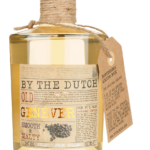
0
%alc/vol
0
mLbottle size
Tasting Notes
- Complex nose of spice, light malty aromas with a hint of juniper
- Anise and citrus peel spritz
- Orange flowers dusted with cinnamon
- Nuanced malt with cloves, bitter orange and a touch of cumin
- Satisfying finish full of flavor with lingering cooked malt
Serving Recommendations
- Neat
- On the rocks
- John Collins – the Original Collins Cocktail
- Paired with a beer, ginger ale, or cola
Awards
- SILVER, 87 HIGHLY RECOMMENDED Tastings.com International Review of Spirits 2018
- SILVER Gin Masters, The Spirits Business 2017
- SILVER WSWA 2017
- BRONZE Berlin Int’l Spirits Competition 2017
- BRONZE IWSC 2017
- GOLD Los Angeles Int’l Spirits Competition 2016
- GOLD Gin Masters, The Spirits Business 2016
- SILVER New York Int’l Spirits Competition 2016
Production Process
Fermented Wash from Malted Barley + Corn + Rye
1st Distillation
2nd Distillation
3rd Distillation + Juniper Berries
Malt Wine Base
Portion of Malt Wine + Botanicals
Portion of Malt Wine
Portion of Malt Wine + Juniper Berries
Blend
Traditional Dutch, Old Genever
By the Dutch Old Genever is distilled (in a “branderij” or distillery) in Schiedam, Netherlands per the early methodology of Genever distillation, using malted barley, rye, and corn.
1942 RECIPE: 17% MALT WINE + 2.3 G/L SUGAR
Old vs. Young
Old versus young is purely a difference in distillation methodology.
Old Genever
- Original style of Genever production
- Distilled with malted barley, rye, corn
- Must contain ‘at least’ 15% malt wine, but no more than 20g/L of sugar
– Often matured in oak, not required
– Usually contains 51% to 70% malt wine
– Up to 20 g/L of sugar - By law must be a pale, caramel color
Birth of Young Genever
- WWII led to lack of imported cereals, malt, and forced a promotion of a new blend
- Trend of lighter and less dominant taste, low price
- Result: development of more grain verse malt & plain sugar-based alcohol
- Must contain no more than 15% malt wine and 10g sugar/L




